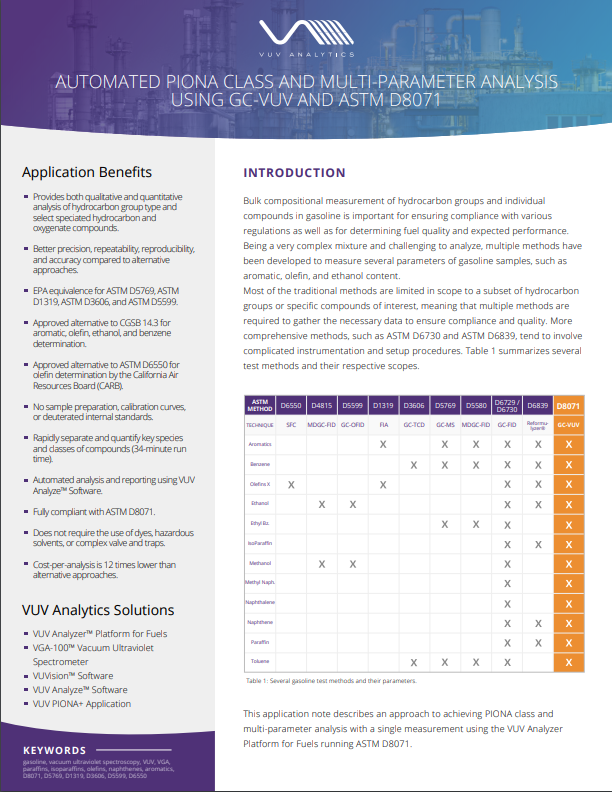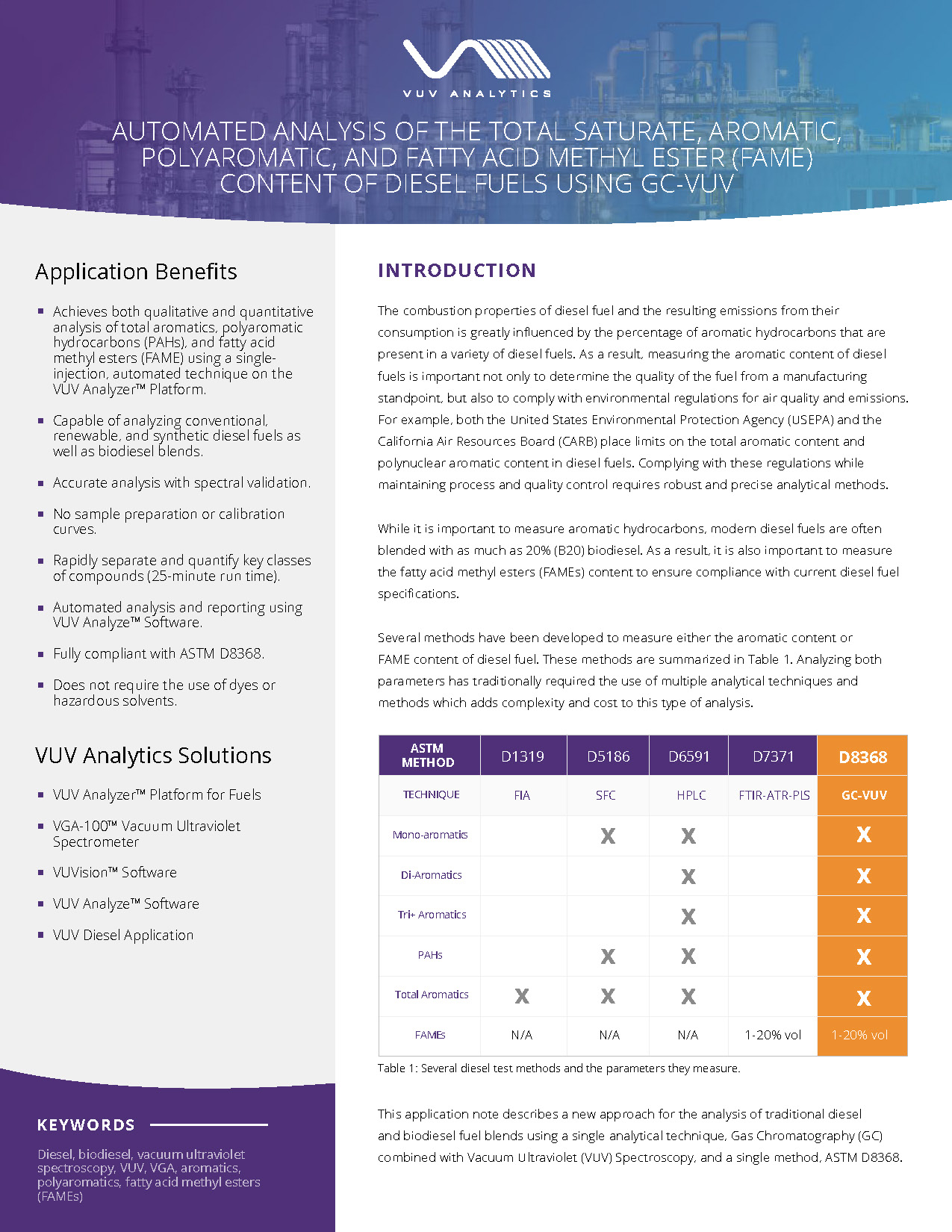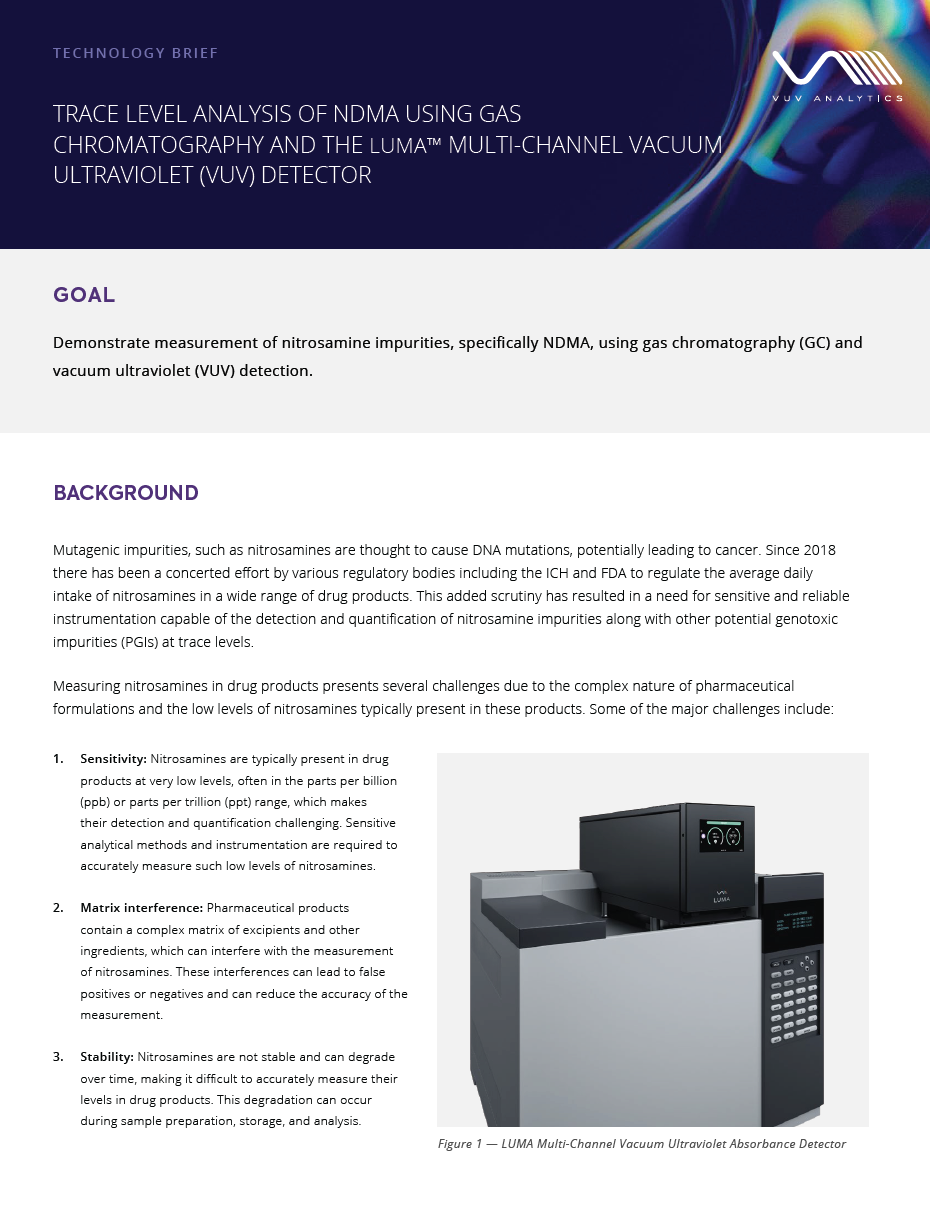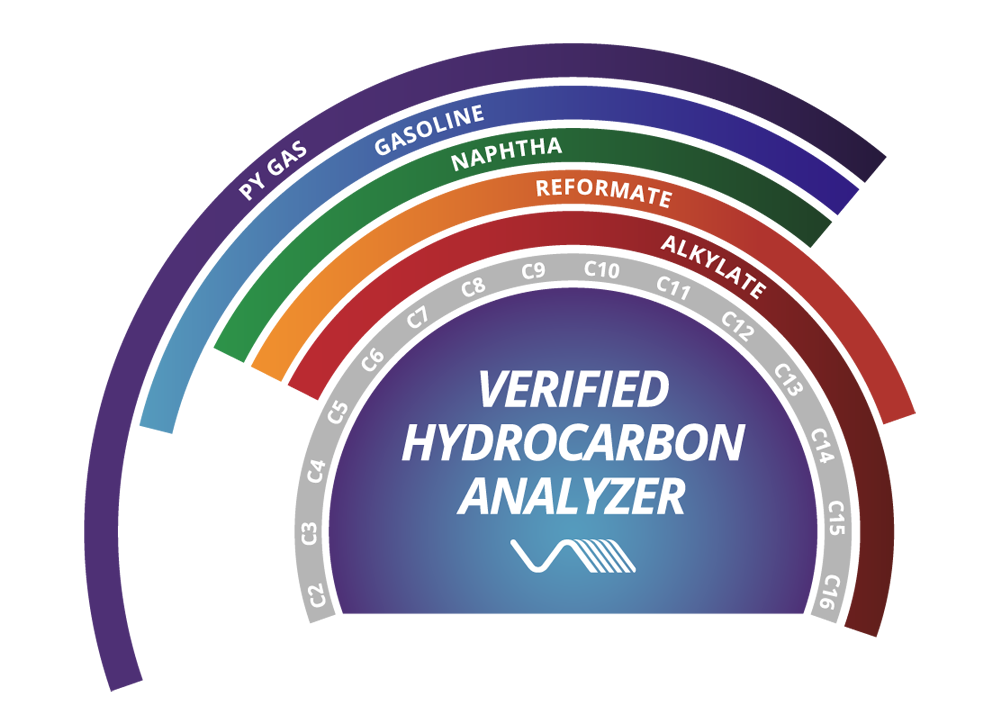Method development and evaluation of pyrolysis oils from mixed waste plastic by GC-VUV
The conversion of waste streams into a useable material through a recycling process is a hot topic. Waste streams can originate from domestic and industrial sources and range from plastic waste to medical waste to various industrial waste streams, both solid and liquid. In addition to waste circularity, circularity for bio-based waste streams and renewable sources are also being investigated. To simplify this complexity, this article presents a case study evaluating the output from the feedstock recycling of plastic waste originating from municipal solid waste.
Plastic waste entering the environment is undesired, and many initiatives are working towards a plastics circular economy. Once disposed of, ideally, plastic waste should be either re-used or recycled in order to avoid incineration or disposal in landfills. Recycling waste plastic can occur either via mechanical recycling or feedstock (chemical) recycling, where feedstock recycling can occur for example, through gasification or pyrolysis technologies. This article will focus only on the oils obtained from the pyrolysis of mixed waste plastic.
The output from pyrolysis has a different composition than traditional fossil-based hydrocarbon streams, and therefore, must be evaluated to correctly process as feedstock. The authors have previously shown that gas chromatography coupled to vacuum ultraviolet detection (GC-VUV) provides accurate identification and quantification of the hydrocarbon composition (paraffins, isoparaffins, olefins, naphthenes, and aromatics – PIONA) of fossil-based liquid hydrocarbon streams.1 Therefore, GC-VUV was evaluated for analysis of the pyrolysis oils from plastic waste. Using an in-house modified spectral library in combination with the PIONA+ software, accurate identification and quantification of the hydrocarbon composition of pyrolysis oils from C4 through C30+ was possible with a limit of detection of 0.1 wt.%. To the best of our knowledge, this article is the first example of accurate PIONA-type quantification of pyrolysis oils by GC-VUV.
Authors
- Melissa N. Dunkle, Dow Benelux BV, Netherlands
- Pascal Pijcke, Dow Benelux BV, Netherlands
- William L. Winniford, The Dow Chemical Company, Freeport, TX USA
- Matthijs Ruitenbeek, Dow Benelux BV, Netherlands
- George Bellos, Dow Benelux BV, Netherlands





